Street lighting
An LED street light is designed to illuminate roads where pedestrians and cyclists are generally present during hours of darkness. Depending on whether the lighting design should account for the presence of non-vehicular traffic roadway lighting can be defined as highway lighting or street lighting. Highway lighting is provided for high speed roads such as freeways, expressways, and limited access roadways. Pedestrians, cyclists, and parked vehicles are generally not present on these roads. Street lighting is provided for roads that serve both vehicular and non-vehicular traffic. These roads include routes connecting areas of principal traffic generation and important rural roadways entering and leaving the city (major roads), roadways servicing traffic between major and local streets (collector roads), roads providing direct access to residential, commercial, industrial or other abutting property (local streets), narrow public ways within a block (alleys), sidewalks, pedestrian walkways, crosswalks, and bikeways.
Visibility requirements
Quality visual information is critical to safety and security in road traffic. Street lighting design is generally more complex than highway lighting design because street lighting is not only required to provide vehicle drivers accurate and comfortable visibility at night of road conditions, but must also produce adequate visibility of pedestrians and cyclists both on and adjacent to the street.
The street lighting system design is based on both pavement luminance and object luminance. Pavement luminance aids vehicular navigation and orientation by communicating information about the roadway boundaries and conflict areas. Object luminance provides the driver with visual information on pedestrians, cyclists, and other vertical obstacles that can pose potential risks of accidents. In complete darkness object luminance is primarily determined by the amount of vertical illuminance delivered by a street light.
In areas of special security concerns, street lighting is required to produce an adequate amount of vertical illuminance so as to create the perception of being identifiable, permit facial identification, and/or facilitate the proper use of other security devices. In urban areas, street lighting systems should be aesthetically designed to blend in with the streetscape.
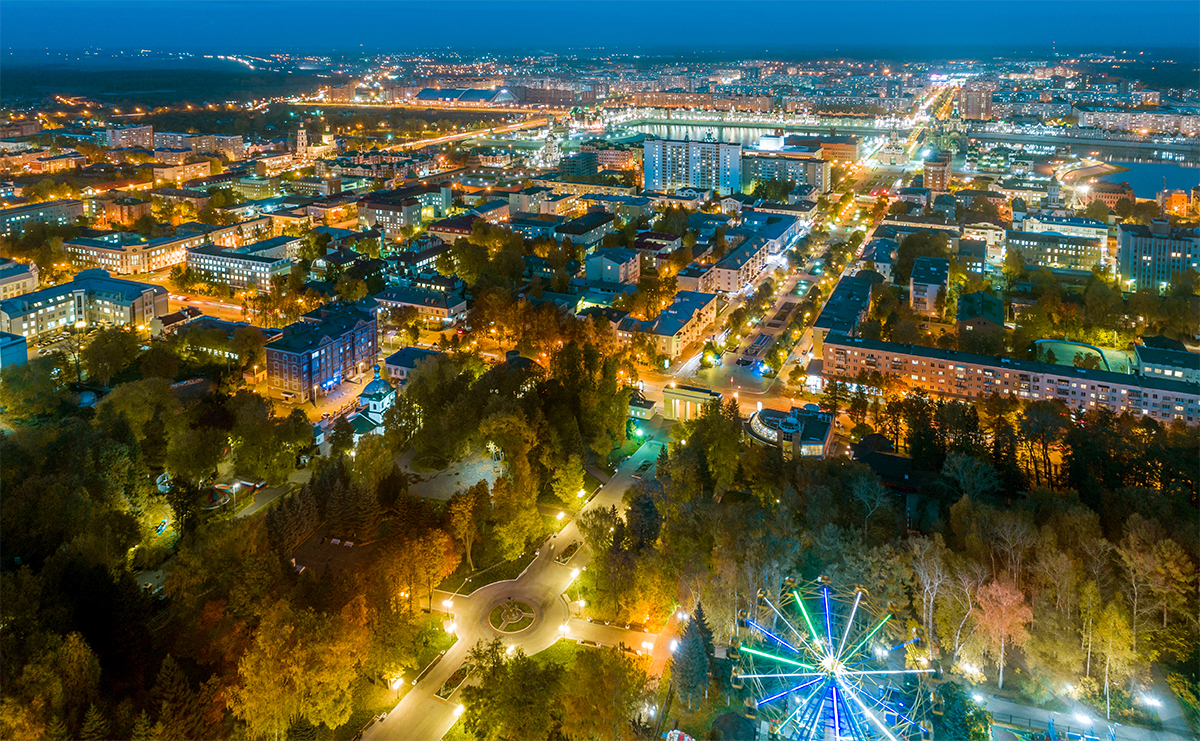
Design considerations
The enormous diversity of road construction specifications imposes different design criteria on street lighting. Street lights may come in various forms, scales, lumen packages and photometric designs. In residential and commercial areas with heavy pedestrian traffic, luminaire height and pole design should respond to the human scale. Unique urban and community design requirements will typically necessitate the use of decorative poles and luminaires for coordination with a given streetscape concept developed by the architect. Human scale street lighting is commonly served by post top lights, pendant street lights, decorative and architectural street lights.
Nevertheless, roads with higher vehicular traffic (major roads, collector roads, local streets) require the use of street lighting with higher mounting heights and larger lumen packages for maximized visibility and fixture spacing. This type of applications is typically served by davit-style, truss-style and mast-arm lighting which is very efficient in distributing light across the roads. A davit-style, truss-style or mast-arm street lighting system consists of a foundation, a pole with cantilevered arm (s), and a luminaire (or multiple luminaires). Luminaires are mounted on heights of 7.5 m to 15 m. Arm lengths range from 1 m to 5 m.
The key to designing with davit-style, truss-style or mast-arm street lighting systems is to specify the performance metrics, optical distributions, and other physical and operational characteristics of the luminaire. In the lighting industry, the term “roadway luminaire” is often interchangeable with the term “street light”. Hereinafter street lights refer to the luminaires of street lighting systems.
Legacy lighting technologies
A street light or roadway luminaire is designed to control the distribution of emitted light, to position and protect the light source, and to provide the light source with a regulated power supply. Traditional street light fixtures are lamp-based systems that have performance characteristics built into the light source (lamp) itself, and the light fixture itself is essentially a holder, with the ability to position and accommodate electrical, optical and mechanical accessories to the lamp. The lamp can be a metal halide (MH), high pressure sodium (HPS), low pressure sodium (LPS), or compact fluorescent lamp. MH and HPS lamps are high intensity discharge (HID) light sources. They’re the most commonly used sources for street lighting applications.
A major drawback to using traditional light sources is that a significant amount of light emitted by the lamp is lost before it exits the fixture due to the omni-directional light output of lamps. High optical loss results in a lower luminaire efficacy. HID lamps are high-intensity nearpoint sources. This causes the single-lamp luminaire to produce large amount of light at and around the beam’s axis and form a zone with an illuminance level much higher than areas farther away from the beam’s axis. Poor uniformity of lighting can cause adaptation effects that may have large safety implications. To minimize adaptation effects and permit better vision, extremely short spacing and more lighting installations are required. The optical design limitations ultimately cause increased construction and operating costs.
Light sources in the form of light bulbs require bulky optical devices to harness the light and direct it towards the target area. This not only adds cost and size to the lighting system but also presents more resistance to the wind and thus further increases the cost of elevating structure.
Gas discharge lamps are inefficient in harvesting the energy savings potential of lighting controls because they have poor dimming controllability and are prone to premature failures under high frequency switching operations.
LED lighting takes a starring role
The introduction of LED technology into street lighting opened up a world of possibilities to implement lighting designs that are sustainable and sensible from the economic and ecological points of view. High source efficacy is only part of the energy savings story with LED street lighting. There can be significant additional energy savings resulting from holistic optimization of optical delivery efficiency, intensity effectiveness, and the spectral power distribution (SPD) for the function of the light.
The small source size and directionality of LEDs enable more efficient light extraction from the source and greater control over the light distribution with small, package-level optics. The full, instantaneous dimmability and high frequency switching capability of LEDs allow LED street lights to incorporate networking and software-based intelligence which can multiply the energy efficiency benefits of LED lighting.
Precise spectral control enables delivery of high scotopic/photopic (S/P) ratio light for improved visual performance at low lighting levels. The light spectrum of phosphor converted LEDs also lends excellent color rendering capability to street lighting. This is in sharp contrast to HPS and LPS street lights which have a low or poor color rendering index (CRI).
Another noteworthy advantage of LED street lighting with respect to the quality of lighting is the ability to deliver uniform lighting along the roads thank to the design flexibility of the light emitting surface (LES) and excellent optical controllability of LEDs.
In addition to high energy efficiency, reduced lighting maintenance is another killing advantage that propelled the massive transition to LED lighting. Maintenance costs for short-lived gas discharge lamps can quickly add up when considering materials, labor and equipment. Furthermore, environmental regulations call for HID and fluorescent bulbs which contain hazardous materials (e.g., mercury) to be carefully disposed of.

Technology implementation
An LED street light is a holistically developed lighting system with its light source strategically integrated into the thermal, electrical, optical, and thermal sub-systems. LEDs are current-driven, temperature-sensitive devices capable of delivering their full value only when each of their main components, especially the LED driver circuit and thermal management system, is properly designed to address operational stresses imposed on the LEDs. The LED luminaire must also be constructed to protect the components from environmental stresses that are typically present in outdoor applications.
A systems approach to luminaire development maximizes the performance of the sub-systems, allowing the LEDs to be operated in a tightly controlled environment over the rated system life. All new construction projects use the integrated type LED street lights. Lamp-based systems which were designed to accommodate traditional light sources are upgraded to LED lighting through the use of retrofit LED lamps. Retrofit LED lamps are very close in size, shape, lumen package, and optical characteristics to their HID, LPS, and CFL counterparts. They have the same lamp bases and operating voltages with the corresponding lamp types, which enables an effortless upgrade. Retrofit LED lamps, however, are compromised in thermal management and drive current regulation due to the space constraints. Their efficiency and lifespan significantly fall behind when compared to integrated LED systems.
Light source
The difference in performance between LED street lights is often a factor of design choices for the product requirements in various lighting applications and the balance between cost and performance. Achieving high levels of energy efficiency and reliability in LED lighting involves complex systems design which revolves around the operational characteristics of LEDs. Systems design and LED package selection go hand in hand. LED packaging plays multiple roles in that it mechanically, thermally and electrically interfaces the LED chip to its operating interface, brings color characteristics to the device, and assists in light extraction.
Many performance variants of the LED luminaire depend on how the LED chip is packaged. There are four types of LED packages: high power packages, mid-power packages, chip-on-board (COB) packages, and chip scale packages (CSPs). The different LED package platforms have different intrinsic characteristics based on the architecture and materials of construction, which impact their reactions to thermal and electrical stresses. High power LEDs are currently the choice of light source for applications that demand excellent lumen maintenance and chromaticity stability at high drive currents and/or high ambient temperatures.
Human scale street lighting applications which usually do not require a substantial amount of lumens from a single fixture may use mid-power LEDs which carry a lower cost, smaller size, and higher efficacy. However, a faster rate of lumen depreciation arising from the use of plastic housings and corrosion-prone leadframes often offsets their cost and efficacy advantages. CSP LEDs are gaining prominence for their package-free design which not only reduces packaging cost but also improves thermal performance. The adoption of COB LEDs is rather limited in street lighting applications because the large LES of these integrated LED arrays poses a serious challenge in optical control.
Thermal management
As a guiding principle, LED system designers should endeavor to maximize the system’s ability to draw heat away from the LED junction so that the device junction temperature is maintained below a set limit. High operating temperatures at the LED junction accelerates the kinetics of failure mechanisms in LEDs. These failure mechanisms could be crystal defect formations in the epitaxial layer structure of the semiconductor die, phosphor degradation, encapsulant yellowing, and discoloration of the plastic package.
Basically, LED thermal management handles the thermal resistance from junction to the environment by creating a thermal path that facilitates conductive heat transfer from the LED chip to the heat sink and convective heat transfer from the heat sink to the surrounding air. The heat transfer capacity of the thermal path must surpass the maximum power load to be dissipated by the LEDs. The thermal path of an LED street light typically runs through the solder joints, metal core printed circuit board (MCPCB), thermal interface material (TIM), and heat sink. These elements must be designed with the lowest possible thermal resistance by maximizing material thermal conductivity and effective area of the thermal path.
The heat sink is the most decisive element of the thermal path. LED street lights make use of the luminaire housing to provide heat sinking. Heat sink design must simultaneously address quantitative requirements of conductive and convective heat transfer. A high performance heat sink is fabricated from aluminum which has a high thermal conductivity and allows to produce complex geometries (through die casting or extrusion) for increased convection surface area and improved aerodynamics.
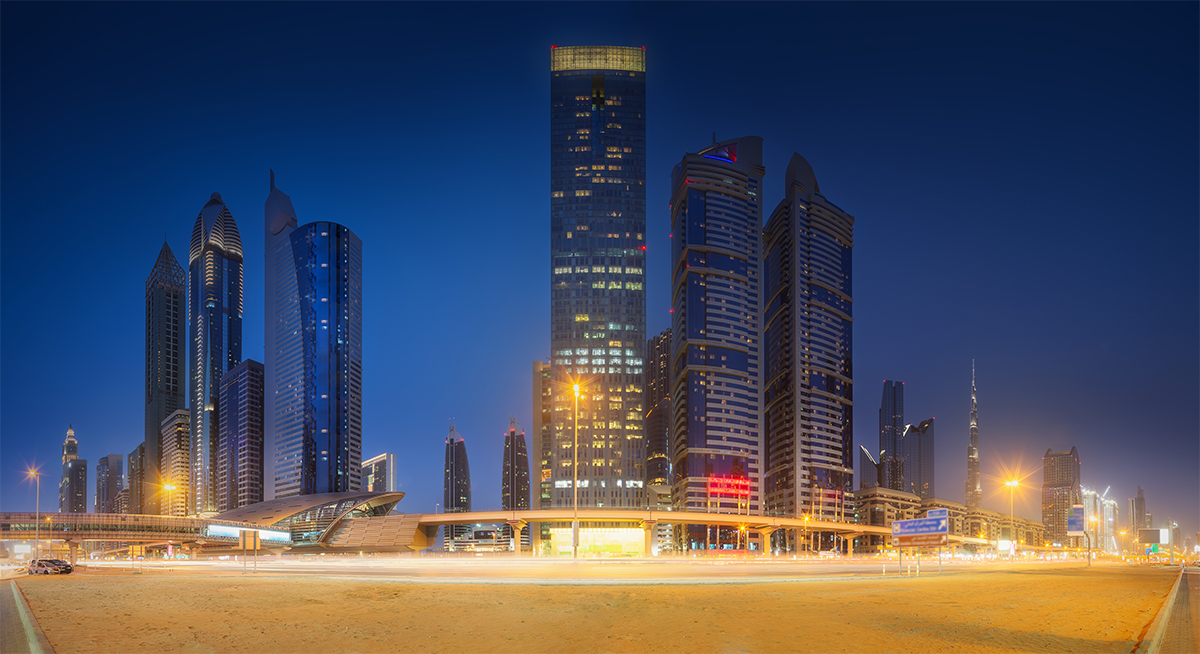
Line and load regulation
The LED driver is an indispensable electronic device which provides an interface between the power supply (line) and the LED array (load). The driver design presents a significant opportunity for differentiation because the most crucial parameters or features of an LED street light, such as lifespan, efficiency and dimming performance, depend, almost exclusively, on the diver circuitry’s configuration and electrical performances. Typically, an LED driver converts AC power into a predetermined magnitude of DC power using one or more switching regulators.
Low cost systems use single-stage AC-DC LED drivers which combine functions of power factor correction and converter in one circuit and thus save 20-50% of the circuit parts count than two-stage AC-DC LED drivers. However, single-stage LED drivers are limited to low-power designs with narrow operating voltages because of the higher current and voltage stresses imposed on power MOSFETs. At higher power levels, these drivers suffer from a lower efficiency, higher EMI signature, and vulnerability to overvoltage from surge events.
A two-stage LED driver has an additional active PFC stage that provides a near unity power factor and a low total harmonic distortion (THD) across a wide input voltage range. Its intermediate DC bus capacitor helps alleviate overvoltage stresses to the power MOSFETs during surge events. Two-stage LED drivers also have lower output current ripple, which provides improvement to flicker control. A dimming range from 0 to 100% can be achieved with two-stage designs in almost every output current range. Consequently, two-stage LED drivers have dominated the market for high power street lighting applications (more than 100 W).
The key performance metrics of LED drivers center on their ability to provide high efficiency power conversion and tight load regulation and control, while protecting downstream components from power surges and other electrical events that cause abnormalities in power quality. LED drivers are typically short-circuit, overload, overvoltage, and over-temperature protected. A surge protector device (SPD) is often applied to lighting installations in areas with a high lightning strike density.
Lighting control
Efficient operation of LED lights can result in substantial savings, which drives the growing demand for controllability and flexibility. Basic and adaptive lighting controls are often installed at the circuit or luminaire level to implement single-strategy controls such as dimming, daylighting harvesting, occupancy sensing, and timing. Most lighting control strategies involve varying lighting levels to suit activity levels during off-peak periods, which necessitates the use of dimmable LED drivers. Many LED drivers on the market include constant current reduction (CCR) and/or pulse-width modulation (PWM) dimming circuitry. The dimming circuitry can be operated using digital (DALI, DMX, ZigBee, etc.) or analog (0-10V, or 1-10V) control signals communicated through the network control system. Implementing a microcontroller-based or programmable architectures in driver design leads to greater intelligence that facilitates automated decision and action.
Remote connectivity is also becoming a regular requirement in street lighting applications. It’s a key capability that allows dynamic control of intelligent street lights and networking of multiple lighting installations to a single point of control at a remote location. Wireless mesh network communication is a particularly useful technology for infrastructure application as it offers low cost availability of interoperability, scalability or accessibility of a networked system. The trend to migrate lighting control to the Internet of Things (IoT) enables a vast new range of features that can be embedded into LED street lights beyond the capabilities for advanced lighting controls.
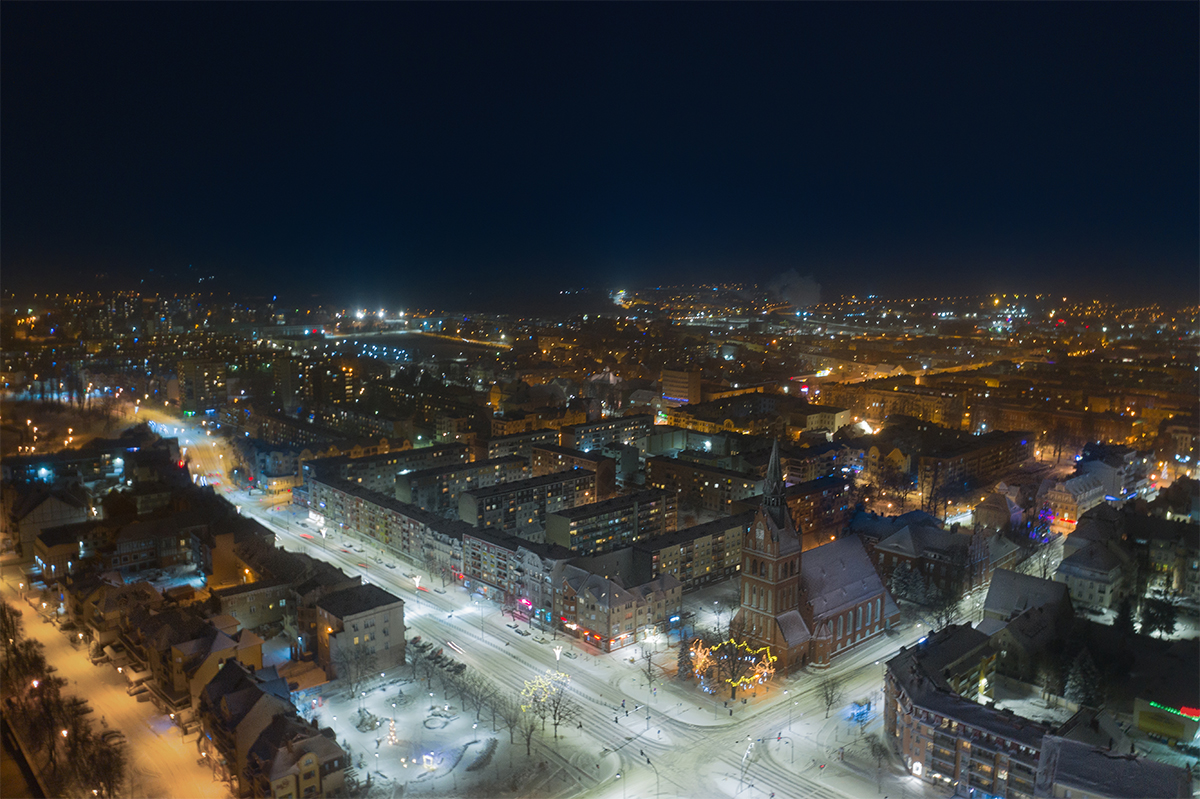
Light distribution
Proper distribution of luminous flux from luminaires is one of the essential factors in efficient street lighting. Lumens generated by a street light must be distributed according to the requirements on longitudinal light distribution (spacing-to-mounting-height relationship) and transverse light distribution (street-width-to-mounting-height relationship). Longitudinal (along-road) light distributions are divided into three groups: short (S), medium (M), and long (L). Common transverse (across-road) light distributions for street lighting can be categorized as being one of the following: Type I, Type II, Type III, and Type IV.
Street lighting needs to be appropriate in relationship to the surrounding community and environment. Based on its lumen output in the various Backlight, Uplight, and Glare zones, a street light is assigned a BUG rating which may be utilized to evaluate the potential for control of obtrusive light (light trespass, sky glow, and high angle brightness). LED street lights can be configured in a greater variety of optical arrangements that deliver precise distributions with excellent obtrusive light control.
When the beam pattern of the LEDs does not fit a particular application, secondary optics can be used to optimize the distribution of luminous flux from the LEDs. Optical control for LED street lights can be accomplished with reflectors, lenses, or a combination of them. A very common optical system for SMD LEDs is a lens array manufactured from injection molded acrylic or polycarbonate. The lens array consists of a group of total internal reflection (TIR) lenses that provide efficient light extraction and precise beam shaping for each individual LEDs.
Control over environmental factors
LED street lights are exposed to a range of environmental factors that can impact the performance and longevity of the lighting systems. It’s often desirable to protect the light engine with a tempered glass lens in order to minimize the effects of dirt. The electrical and optical chambers should be completely sealed to resist the intrusion of water, insects and dust. To relieve the stress placed on seals and connection points due to pressure differentials created by temperature cycling, protective vents should be installed to equalize pressure and reduce condensation by allowing air to pass through the membrane while filtering out liquids and other contaminants.
The aluminum housing of LED street lights are highly susceptible to corrosion attack. Chemical surface treatments and powder coating applications are vital in maximizing resistance to corrosion. A self-cleaning heatsink design helps prevent accumulation of dirt, dust, debris, and other airborne contaminants that can compromise heat sinking performance and cause corrosive attacks.
Extra attention should be paid to the reliability of the solder joint between the LED package and printed circuit board (PCB) which can be challenged by strains incurred in thermal cycling and repeated vibration from vehicles traveling at a high rate of speed.


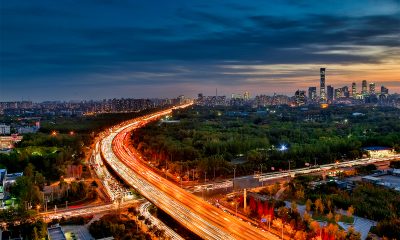



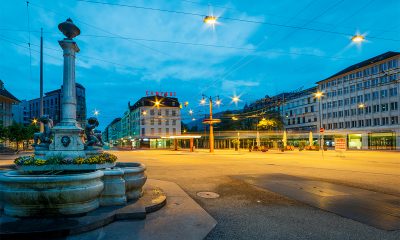
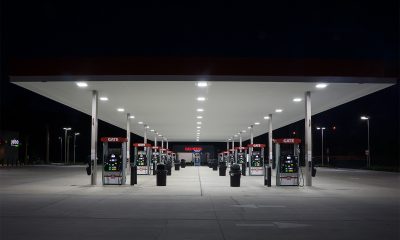











Loading...
New member
New member
New member
New member
New member
New member
New member